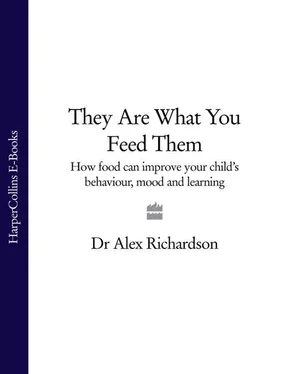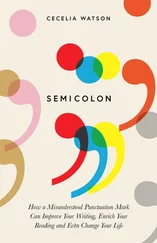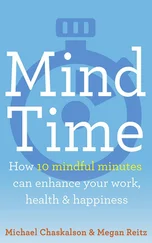Healthy Strawberry Yoghurt, Anyone?
Check your labels:
‘strawberry yoghurt’: contains some real strawberry
‘strawberry-flavoured yoghurt’: there’s a tiny bit of strawberry, somewhere
‘strawberry-flavour yoghurt’: no strawberries at all
The cheaper ones are usually the last of these three, and some of their ingredients can be dubious: gelatine, pectin/gum, flavourings, colourings, and corn sugar.
Low-fat ‘healthy’ yoghurts usually contain even more thickeners (corn starch this time) along with plenty of sugar or artificial sweeteners.
Other scientific studies have looked at other aspects of diet. For example, many well-controlled trials have looked into whether artificial food additives might aggravate hyperactivity and related behaviour problems. Many of these were carried out years ago, but variability in their designs and results made it hard to know what to believe. More recently, two important studies have confirmed that some common food additives with no nutritional value really do seem to worsen behaviour in many children. Might your child be one of them? How much more evidence will we need before we take action? When you read about these issues in Chapter 6, you can decide for yourself (and your children) what you want to do.
‘Cheap Trick’ Frozen Chicken Nuggets*
Ingredients
Chicken carcasses
Chicken skin
‘Mechanically recovered’ bits of bird
Artificial additives (colourings, flavourings, preservatives, texture-modifying agents)
Hydrogenated (bad) fats
Procedure
Scrape the skin and other bits off the machinery or factory floor.
Add to chicken carcass and put in high-speed blender.
Add the bad fats, texture-modifiers and other additives.
Form into nugget shapes and cover with ‘bread crumbs’ (more additives).
Freeze and package attractively.
Sell to parents to feed to their children.
Sell to schools and restaurants en masse for the same purpose.
*with due credit to J. Oliver and Co for showing that consumers do often change their preferences when you tell them what they’re really eating.
It’s not just what has been added to our food that matters—it’s also what’s been taken away. In Chapter 4 we’ll look at essential nutrients. As you’ll see, there are lots of these—but many are seriously lacking from the diets of children, adolescents and adults in the UK. How would you know? Well, deficiencies in some nutrients lead to well-documented physical symptoms, but these are not always recognized as such—and may be treated with medications that can make matters worse. What about mental symptoms? Can a poor diet alone really cause bad behaviour? Later, you’ll hear more about a rigorous study of young offenders carried out in a high-security prison. 3In this study, giving just the recommended daily amounts of vitamins and minerals (with some essential fatty acids) with no other changes actually reduced the number of violent offences by more than 35 per cent. Can you imagine that effect translated into the wider community? What might be achieved in your child’s school, or your neighbourhood, if aggression and antisocial behaviour fell by that amount? Given the potential implications, wouldn’t you think the Government would be keen to follow up on these kinds of findings? In the UK, sadly the answer is ‘No, not yet.’ The funding for this particular research (including replication studies now underway) has been provided almost entirely by charities. 4
Supermarkets force producers to grow larger apples (so people end up buying more) which means the apples’ vitamin and mineral content declines.
McDonald’s got into trouble for selling their fries as fit for vegetarian consumption when their reformed spuds had been cooked in beef tallow.
So they switched to vegetable oil (which incidentally produces bad trans fats when heated). Now the distinctive taste of the fries comes from an infusion of synthetic beef tallow.
In fact, many of the flavourings now used in our foods are synthetic chemicals: you can’t smell or taste the difference, but there is no nutritional value in them.
Even if policymakers are lagging behind, it seems that consumers are beginning to turn. Sales of bagged snacks, sugar confectionery, fizzy soft drinks, frozen meals and pizzas have apparently declined over the last year, while sales of fruit juices, cheeses, bread and drinking yoghurt have increased. McDonald’s has had to close at least 25 of its UK branches (even though it began to introduce supposedly ‘healthier’ ranges—but let’s not go there!). The media tell us that confectionery and soft drinks companies such as Cadbury-Schweppes may be planning to put health messages on their packaging (is this to provide them with some defence if they find themselves sued like the tobacco companies?). The makers of sausage rolls and pasties are apparently seeing a large drop in profits. And I know I’m not the only one pleased to see that one of the big supermarkets has finally taken a certain brightly coloured, additive-laden drink pretending to look like orange juice off its shelves. ‘Surly Despair’ would be a better name for this one, given the amount of sugar and artificial additives it contains. If I had a pound for every time a parent, professional or support group leader has complained to me about the way that this (and similar drinks) can ‘send our children up the wall’, we could probably fund our whole next year’s research programme on the proceeds. As it is, these kinds of companies have been raking in the money and yet few people have seen the need to finance research to see what these and other ‘junk foods’ might really be doing to our children’s brains.
Not All Sweetness and Light
A survey for Food Magazine in 2004 revealed that a single drink of Ribena or Lucozade could give your child more than a whole day’s recommended sugar intake.
500ml bottle Ribena: 70g sugar (equivalent to at least 15 teaspoons)
380ml bottle Lucozade Energy: 64g sugar
330ml bottle Coca-Cola: 25g sugar
That means a bottle of the soft stuff can give your child the same ‘sugar hit’ as one to four packets of sweets. In some cases, the sweetener may be in the form of high-fructose corn syrup (which is cheaper to produce than sugar).
‘No added sugar’ varieties just put in artificial sweeteners instead, which some good evidence shows may carry different kinds of risks.
Regular consumption of fizzy, sweet drinks can lead to a decline in body levels of important minerals
In the news, we hear that 40 per cent of patients in our hospitals are suffering from malnutrition—which can add serious complications to their treatment and care, and significantly slow their recovery. 5In most cases it probably contributed to their illness too—but at least the links between nutrition and physical health are starting to be acknowledged by our health services. (They have long been recognized by top performers in physical sports!) What we need now is a similar acceptance that food and diet also affect mental health and performance. It really should be ‘barn door’ obvious. The brain is part of the body—and has nutrient and energy requirements of its own. But remarkably little systematic effort has so far been devoted to finding out what those requirements really are—and just how our mood, behaviour and learning really can be affected when these needs are not properly met.
Still, it’s encouraging to see that consumers are beginning to wise up to some of what’s been going on, and to change their shopping and eating habits as a result. For the sake of your children, I do hope you are one of them—and I hope this book will give you some of the help you’ll need.
Читать дальше












